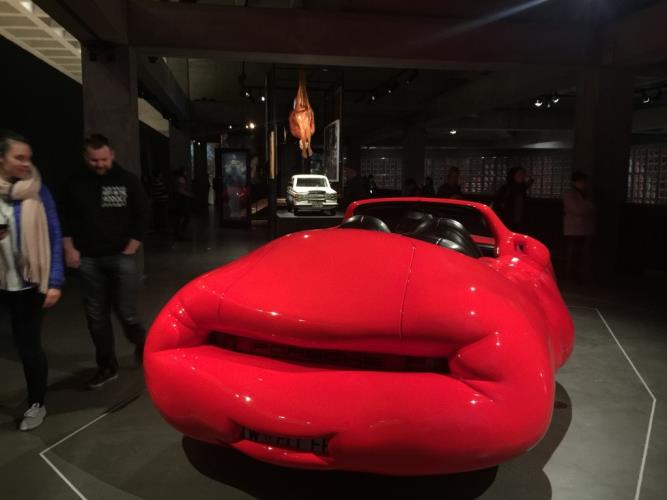Yap loves design, travel and everything beautiful in life. He writes for various media about travel and design and has published works, including Wander Bhutan and Myanmar Odyssey. Formerly publisher of Lonely Planet (China Office), Yap is now Chief Content Officer of Youpu Apps, a Beijing based travel app company.

If Hai Zi lived in Hobart, it would be difficult for him to come up with poetry that reads: “From tomorrow on, I will care about food and vegetables. Living in a house facing the sea, where flowers blossom in the warm climate.” In Hobart, all the houses are sea-facing, and people hardly have to worry about the supply of food and vegetables, since the level of comfort and leisure in the place is unlikely to inspire the innocent yet intense longing expressed in this poem. There is no need to “begin from tomorrow”, when Hobart is beautiful from the beginning.
With its unimpressive attractions and museums downtown, Hobart is not necessarily a tourism-friendly city. The many houses built by the British settlers during the colonial period are also not remarkable in terms of scale or richness of detail. However, it is a lovely place to live, and the residents here seem much contented by what it offers. Otherwise, there will not be such a vast range of plants that fill their gardens and blossom in the beauty of spring.
Those who have been to Hobart have told us that Mona Art Gallery is an unmissable destination. In recent years, the modest city of Hobart has drawn much attention among travellers because of this art gallery. Founded by the wealthy merchant David Walsh, this gallery is the largest privately-owned art gallery in Australia, and has showcased many solo exhibitions. Given its huge popularity, the gallery has recently decided to charge an admission fee for the shows.
The gallery has a striking architecture and, in particular, a fascinating layout. The front part of the gallery is decorated with a number of large-scale installations. What intrigues most is that there is a tennis court at the front, a design adopted to please David Walsh, its founder, who is very keen on tennis. What an indulgence.
Entering the gallery feels like going through a deep tunnel. Located 17 metres below ground, visitors find themselves rising from its deepest part to the ground level exit. The gallery has retained the rough texture of its stone walls, and features a windowless design where the interior is kept dark and mysterious. This not only dramatises the overall gallery experience, it is also befitting for a gallery that features such controversial, outrageous exhibits. Many of the 400 exhibits in the gallery are owned by Walsh. An eclectic range, these exhibits range from historical relics to contemporary objects, with one of the most curious exhibits being the “manure machine” conceived by the Belgium maestro, Wim Delvoye. It manufactures manure on a daily basis, and invites the visitor to witness the production process. The product is then packaged into a sealed vacuum bag and sold as a product in a sale, a critique on at the idea of commercialised acts in a production-led capitalist society. Other than these objects of intrigue, there are also more traditional exhibits such as mummies from Egypt and handicrafts from Africa. Some of the most contemporary and classic exhibits are displayed alongside each other, as they all capture an aesthetic appeal that the founder approves of. The fact that these items have caught the eye of their master, helps to justify their presence in this space, and makes it unnecessary to split them up into categories.
The gallery boasts an organic layout where no thematic arrangement or captions are visible. Instead, the information on each exhibit is contained in the iPod device that guides the visitor along. If a visitor finds a painting he likes, he or she can then use the device to retrieve the detailed information on this exhibit and its artist. He or she can also share his or her thoughts on the exhibition by leaving a message via the device, to indicate a “Like” or “Hate”, or to “share” via social media. After one’s visit, it is also possible to retain a copy of the information on the exhibits via email. The entire interactive process aims to bring in the use of social media in the gallery experience, illustrating the medium as a contemporary medium of exchange, and to encourage people to reflect on the traditional gallery experience. It is as if gallery browsing is similar to shop-browsing, where one is led by one’s instincts and preferences, and that the enjoyment it brings does not depend on any fixed routes or visiting itinerary.
One remarkable fact about this unconventional gallery is that Walsh is a professional gambler who came up with a formula that calculates the probability of winning and losing a bid. Later, he reinvested his income from gambling into his private art collection, which proves that he is a businessman with foresight. The achievement of Mona lies in the way it revolutionises the art gallery experience, making it much more imaginative. As its owner said: “This is a subversive, adult Disneyland. Creativity is always subversive, as it is all about revealing something new through unprecedented acts.”